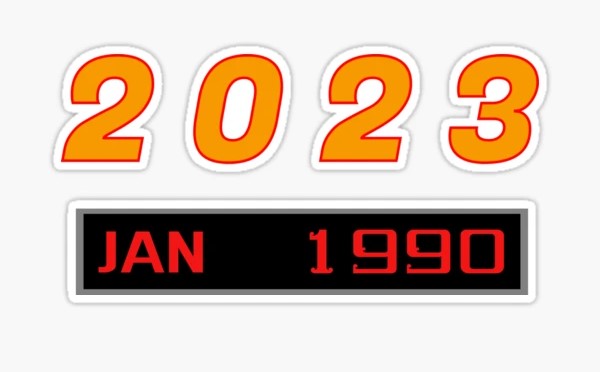Customizing Your Protection: How to Choose the Right Handgun
Understanding Different Types of Handguns
When selecting a handgun, the first step is understanding the available types. Handguns are generally categorized into two main types: semi-automatic pistols and revolvers. Every category comes with its distinct characteristics, advantages, and restrictions. A favored choice in the semi-automatic class is the Glock 19, acclaimed for its dependability and user-friendly design. This model has become synonymous with concealed carry and law enforcement due to its versatile and dependable nature.
Considering the specific attributes of different handgun types can significantly inform your decision. Whether you lean towards a semi-automatic pistol like the Glock 19 or a robust revolver, understanding these fundamental distinctions is crucial. Knowing what each type offers in terms of functionality and ease of use will guide you in making an informed selection.
Semi-Automatic Pistols
Semi-automatic pistols are favored for their ease of use and higher magazine capacity. They reload automatically, allowing quick follow-up shots without manually cycling the action. It makes them particularly appealing for self-defense and law enforcement. The design of semi-automatics is also more ergonomic, enhancing the user’s ability to maintain control during rapid-fire situations.
Revolvers
On the other hand, Revolvers are praised for their simplicity and reliability. With a limited number of moving parts, they are significantly less likely to jam, which can be a lifesaver in high-stress situations. Revolvers generally have a longer barrel, which can improve accuracy. However, they typically hold fewer rounds than semi-automatics, a trade-off for their straightforward operation. For those who value consistency and simplicity, a revolver can offer a secure sense of reliability.
Considering Handgun Safety and Reliability
When selecting a handgun, it is essential to prioritize safety and reliability in your decision-making process. A model that incorporates multiple safety features and boasts high reliability will provide peace of mind. Here are some critical aspects to consider:
- Safety Features: Evaluate the safety mechanisms of each model, such as manual safeties, trigger safeties, and loaded chamber indicators. These characteristics help prevent unintended firing and guarantee the user’s ability to handle the weapon securely. Each safety mechanism should be intuitive and easy to engage and disengage.
- Build Quality: High-quality construction enhances durability and ensures consistent performance. Look for models with robust materials and a solid track record. A well-made handgun will stand up to regular use and maintain its reliability over time, reducing the likelihood of mechanical failure when needed most.
- Manufacturer Reputation: Opt for brands known for their reliability and robust safety features. Established manufacturers often adhere to stringent quality control standards, bolstering their firearms’ reliability. Research user reviews and seek recommendations from trusted sources to gauge the reputation of different manufacturers.
Selecting a Handgun That Fits Your Needs
Choosing a suitable handgun is highly personal and depends on individual needs and preferences. Several crucial factors should be weighed to ensure the chosen firearm aligns with your specific circumstances:
Handgun Fit and Comfort
A gun should feel comfortable in your hand and be easy to control. The grip size, weight, and balance significantly determine how well you can handle and shoot accurately. If a handgun doesn’t fit well, it can impact your shooting performance and safety. Devoting time to trying various models and sizes can lead to discovering the ideal match for your hands.
Intended Use
Determine the primary purpose of your handgun. Is it for home defense, concealed carry, or perhaps recreational shooting? Each use case may require different features and specifications. A small, lightweight handgun might be better for carrying discreetly, while a bigger, more robust model could be preferred for protecting the home because of its greater stopping power.
Budget Considerations
Your budget will naturally influence your final decision. It’s essential to find a balance between cost and quality. While it may be tempting to opt for a lower-priced option, investing in a reliable handgun that will stand the test of time is often worth the additional expense. Consider the long-term value and peace of mind of owning a well-made firearm.
Practical Tips for Testing and Evaluating Handguns
To make an informed choice, test the handgun models you are interested in. Hands-on experience can provide invaluable insights:
- Visit a Shooting Range: Many ranges offer rentals, allowing you to test various models firsthand. It can help you understand each handgun’s handling, recoil, and overall comfort. Feel free to test multiple models to find the best fit.
- Seek Opinions: Talk to experienced shooters and gun store employees for their insights on different models. These experts can offer practical advice based on their personal experiences and observations. Their recommendations can help you navigate the vast array of choices more effectively.
- Read Reviews: Search for user reviews and expert opinions online to collect various viewpoints. Reviews can reveal common issues or praises that may take time to be apparent during a brief test session. Utilize trusted sources and forums to ensure you’re getting reliable information.
Maintaining Your Handgun
Maintaining your handgun regularly to guarantee its durability and dependability is essential. Neglecting maintenance can lead to malfunctions and degraded performance. Here are some essential maintenance tips:
- Clean your handgun after each use to remove dirt and residue. Proper cleaning helps prevent corrosion and ensures smooth operation. Use appropriate solvents and cleaning tools designed for firearms.
- Lubricate moving parts to avoid wear and tear. Adequate lubrication reduces friction and helps maintain the handgun’s functional integrity. Follow the manufacturer’s guidelines for lubrication points and recommended oils.
- Keep your firearm secure and dry to prevent rust and corrosion. A gun safe or case with a dehumidifier can provide optimal storage conditions. Ensuring your handgun is stored adequately protects it from environmental damage and unauthorized access.
Conclusion
Choosing a suitable handgun involves considering various factors, including type, safety, fit, and purpose. You can find a handgun that meets your needs by researching, testing different models, and seeking expert advice. A well-chosen handgun provides not only peace of mind but also ensures your safety and satisfaction. Making a well-informed decision will result in a more confident and enjoyable ownership experience.
If you gained new insights from this article, be sure to explore our blog for more enlightening content.







